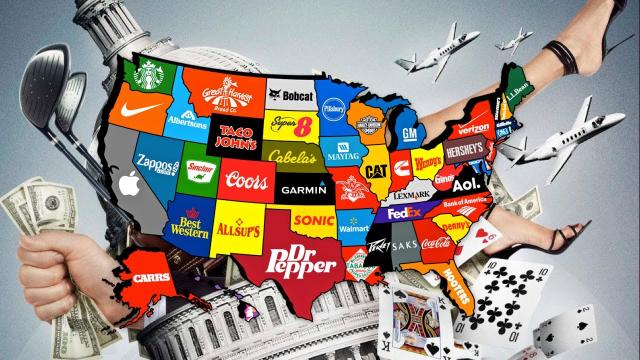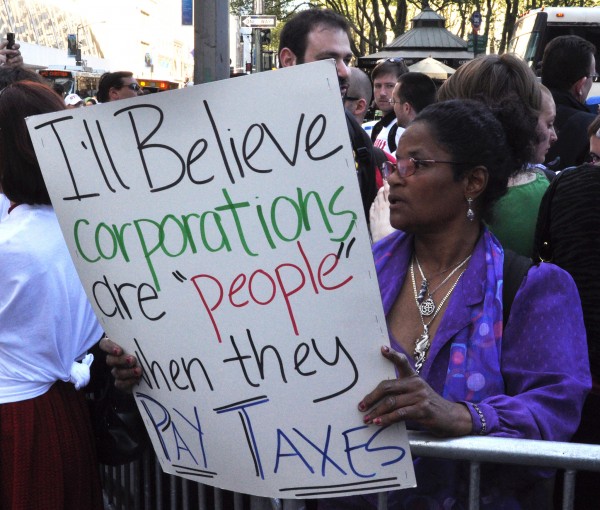
For 40 years, tax cutters in Congress have told us, “we have a tax cut for you.” And each time, they count on us to suspend all judgment.
In exchange, we’ve gotten staggering inequality, collapsing public infrastructure, a fraying safety net, and exploding deficits. Meanwhile, a small segment of the richest one tenth of 1 percent have become fabulously wealthy at the expense of everyone else.
Ready for more?
Now, Trump and congressional Republicans have rolled out a tax plan that the independent Tax Policy Center estimates will give 80 percent of the benefits to the richest 1 percent of taxpayers.
The good news is the majority aren’t falling for it this time around. Recent polls indicate that over 62 percent of the public oppose additional tax cuts for the wealthy and 65 percent are against additional tax cuts to large corporations.
Here’s the independent thinker’s guide to the tax debate for people who aspire to be guided by facts, not magical thinking. When you hear congressional leaders utter these claims, take a closer look.
“Corporate Tax Cuts Create Jobs.”
You’ll hear that the U.S. has the “highest corporate taxes in the world.” While the legal rate is 35 percent, the effective rate — the percentage of income actually paid — is closer to 15 percent, thanks to loopholes and other deductions.
The Wall Street corporations pulling out their big lobbying guns have a lot of experience with lowering their tax bills this way, but they don’t use the extra cash to create jobs.
The evidence, as my Institute for Policy Studies colleague Sarah Anderson found, is that they more often buy back their stock, give their CEOs a massive bonus, pay their shareholders a dividend, and lay off workers.
“Bringing Back Offshore Profits Will Create Jobs.”
Enormously profitable corporations like Apple, Pfizer, and General Electric have an estimated $2.64 trillion in taxable income stashed offshore. Republicans like to say that if we give them a tax amnesty, they’ll bring this money home and create jobs.
Any parent understands the folly of rewarding bad behavior. Yet that’s what we’re being asked to do.
When Congress passed a “repatriation tax holiday” in 2004, these same companies gave raises to their CEOs, raised dividends, bought back their stock, and — you guessed it — laid off workers. The biggest 15 corporations that got the amnesty brought back $150 billion while cutting their U.S. workforces by 21,000 between 2004 and 2007.
For decades now, those big corporations have made middle class taxpayers and small businesses pick up the slack for funding care for veterans, public infrastructure, cyber security, and hurricane mop-ups. Let’s not give them another tax break for their trouble.
“Tax Cuts Pay for Themselves.”
Members of Congress who consider themselves hard-nosed deficit hawks when it comes to helping hurricane victims or increasing college aid for middle class families are quick to suspend basic principles of math when it comes to tax cuts for the rich.
The long discredited theory of “trickledown economics” — the idea that tax cuts for the 1 percent will create sufficient economic growth to pay for themselves — is rising up like zombies at Halloween. As the economist Ha Joon Chang observed, “Once you realize that trickle-down economics does not work, you will see the excessive tax cuts for the rich as what they are — a simple upward redistribution of income.”
“Abolishing the Estate Tax Will Help Ordinary People.”
This is the biggest whopper of them all. The estate tax is only paid by families with wealth starting at $11 million and individuals with $5.5 million and up. There is no credible economic argument that this will have any positive impact on the economy, but it would be a huge boon for billionaire families like the Trumps.
This tax cut plan is an unprecedented money grab. Whether the heist happens, is entirely up to the rest of us.
3 WAYS TO SHOW YOUR SUPPORT
- Log in to post comments














